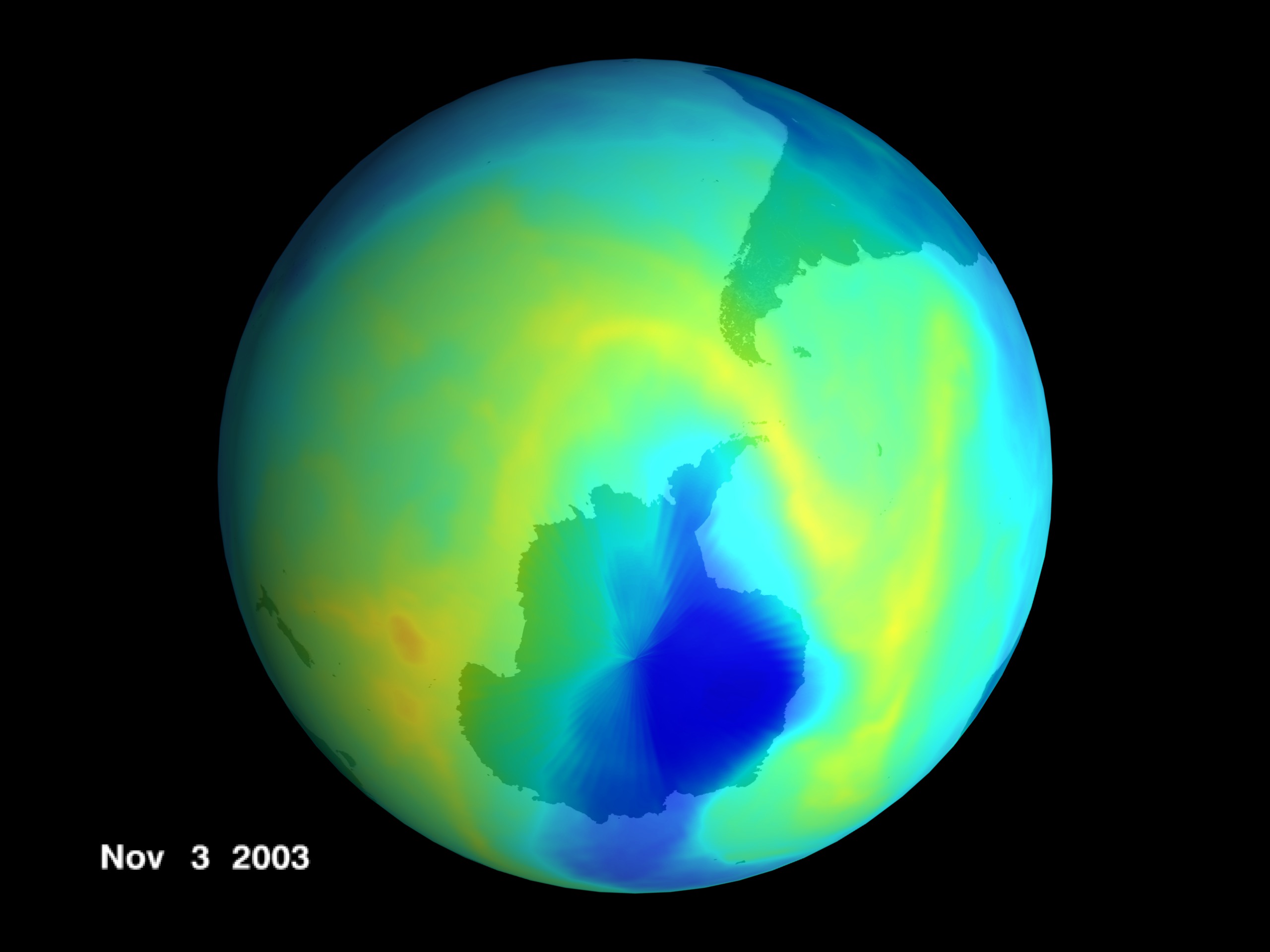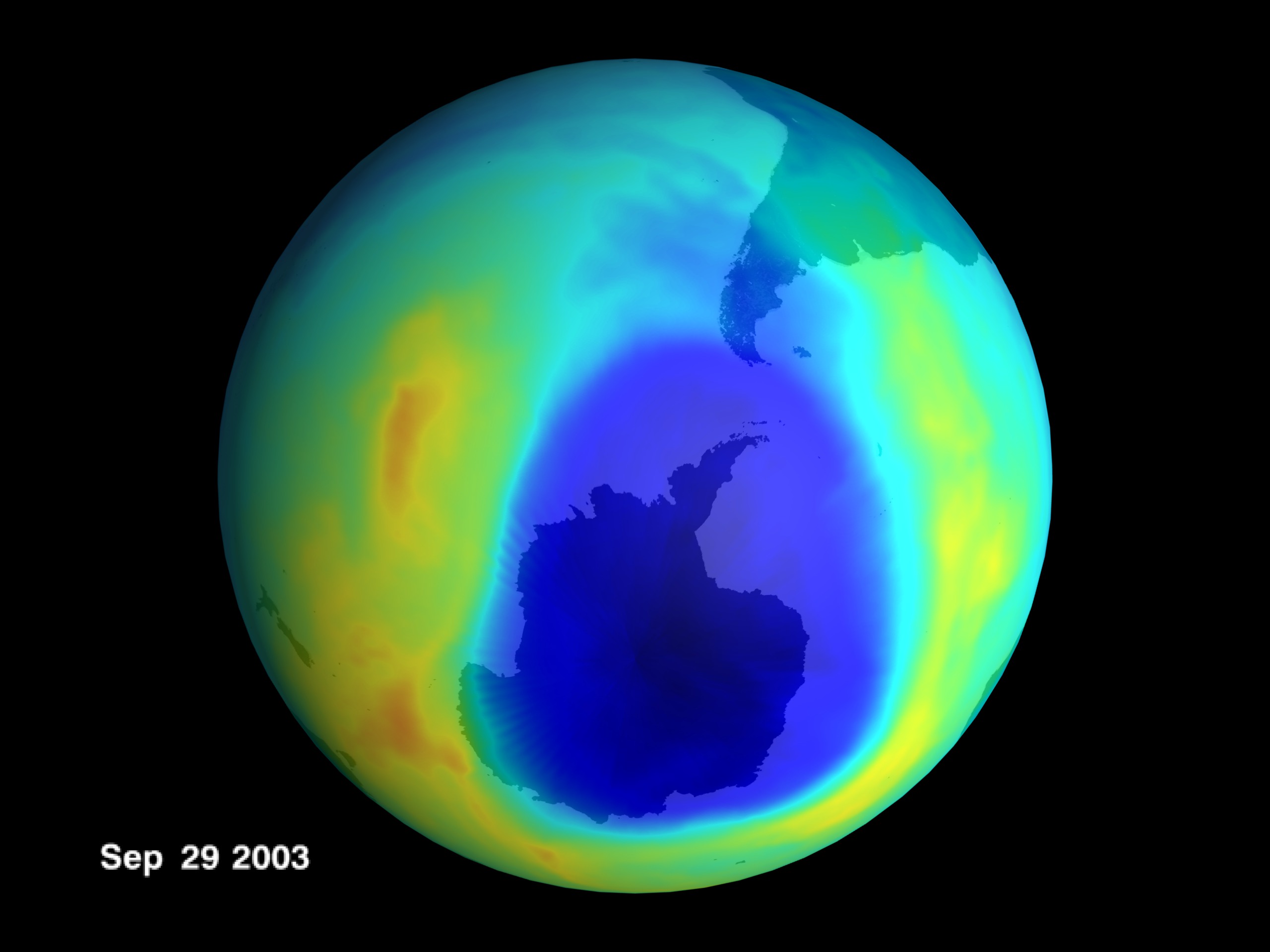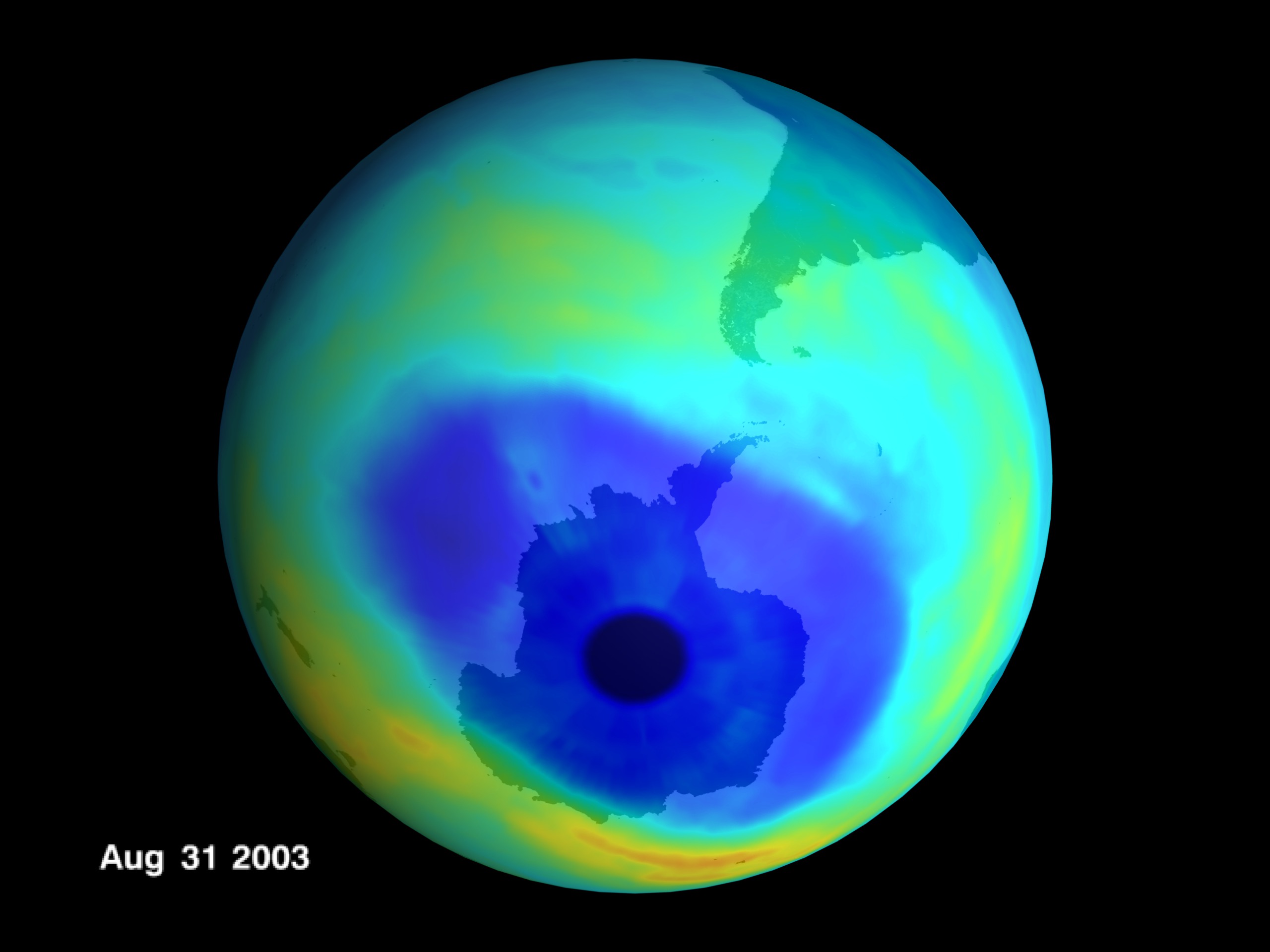Sun
ID: 2989
TOMS provides dramatic visual evidence of the annual growth and decay of the Antarctic ozone hole. The ozone losses over Antarctica result from reactions with the products of man-made chlorine and bromine compounds. Because of the tilt of the Earth's axis, continuous darkness falls at the South Pole from March 21 to September 21. The dark region in the middle of the July 1 total ozone picture is polar night, where TOMS cannot make measurements. Ozone losses are in blue. Beginning in August, returning sunlight reaches the edges of Antarctica providing chlorine and bromine compounds with energy to rapidly destroy ozone. By mid September, the ozone loss peaks, creating an ozone hole over Antarctic.
or more information see http://www.gsfc.nasa.gov/topstory/2003/1208toms.html




The 2003 Antarctic Ozone Hole
or more information see http://www.gsfc.nasa.gov/topstory/2003/1208toms.html




For More Information
Visualization Credits
Please give credit for this item to:
NASA/Goddard Space Flight Center Scientific Visualization Studio
NASA/Goddard Space Flight Center Scientific Visualization Studio
Short URL to share this page:
https://svs.gsfc.nasa.gov/2989
Data Used:
Note: While we identify the data sets used in these visualizations, we do not store any further details nor the data sets themselves on our site.
Dates of Data Used:
2003/07/01, 2003/08/31, 2003/09/29, 2003/11/03
This item is part of this series:
Ozone
Keywords:
SVS >> Antarctic
DLESE >> Atmospheric science
GCMD >> Earth Science >> Atmosphere >> Atmospheric Chemistry/Oxygen Compounds >> Ozone
SVS >> For Educators
SVS >> Earth >> Texas >> Houston
SVS >> Stratospheric Ozone >> Distribution
SVS >> Atmospheric Science
NASA Science >> Sun
GCMD keywords can be found on the Internet with the following citation: Olsen, L.M., G. Major, K. Shein, J. Scialdone, S. Ritz, T. Stevens, M. Morahan, A. Aleman, R. Vogel, S. Leicester, H. Weir, M. Meaux, S. Grebas, C.Solomon, M. Holland, T. Northcutt, R. A. Restrepo, R. Bilodeau, 2013. NASA/Global Change Master Directory (GCMD) Earth Science Keywords. Version 8.0.0.0.0
https://svs.gsfc.nasa.gov/2989
Data Used:
Earth Probe/TOMS/Ozone
2003/07/01, 2003/08/31, 2003/09/29, 2003/11/03Dates of Data Used:
2003/07/01, 2003/08/31, 2003/09/29, 2003/11/03
This item is part of this series:
Ozone
Keywords:
SVS >> Antarctic
DLESE >> Atmospheric science
GCMD >> Earth Science >> Atmosphere >> Atmospheric Chemistry/Oxygen Compounds >> Ozone
SVS >> For Educators
SVS >> Earth >> Texas >> Houston
SVS >> Stratospheric Ozone >> Distribution
SVS >> Atmospheric Science
NASA Science >> Sun
GCMD keywords can be found on the Internet with the following citation: Olsen, L.M., G. Major, K. Shein, J. Scialdone, S. Ritz, T. Stevens, M. Morahan, A. Aleman, R. Vogel, S. Leicester, H. Weir, M. Meaux, S. Grebas, C.Solomon, M. Holland, T. Northcutt, R. A. Restrepo, R. Bilodeau, 2013. NASA/Global Change Master Directory (GCMD) Earth Science Keywords. Version 8.0.0.0.0











